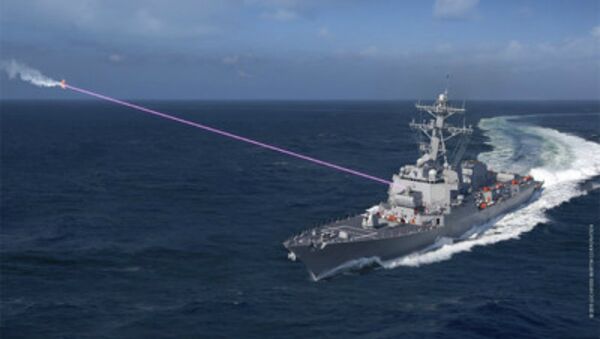The Silent Killer's laser successfully intercepted an unmanned aerial vehicle (UAV) from 300 meters away during a mock demonstration, the Asia Times reported May 30. The system is tailored to eliminate low-flying, slow-moving and small-sized targets, notes the People's Daily, a Chinese publication.
The Silent Killer also relies on electronic capabilities such as anti-jamming to withstand incoming electronic attacks that can make the system inoperable.
While it is unclear if the demonstration featured the Silent Killer operating from a mobile platform or a fixed location, Poly Technologies representatives said the drone killer could be mounted on a ship for naval warfare as well.
Military applications aside, the anti-UAV system may be more popular among privacy enthusiasts or celebrities worried about drones taking pictures of them inside their homes. Poly Technologies offers a civilian-version of the Silent Killer "with reduced laser power to jam the communications systems of drones," ATimes said.
It's not clear how powerful the laser beam is on the military and civilian versions of the Silent Killer.
However, there is good reason to think that the Chinese lasers are every bit as capable as defense representatives say they are — and perhaps even more.
A Wall Street Journal report in early May accused Chinese personnel of firing lasers at American military pilots near China's naval base in Djibouti. "There have been two minor injuries," Pentagon spokeswoman Dana White said May 3, adding that "they are very serious incidents."
US aviation officials sent out a notice to airmen, or NOTAM, in late April stating "there have been multiple lazing events involving a high powered laser in the vicinity" of the People's Liberation Army-Navy base. According to IHS Jane's the coordinates where pilots needed to exercise "extreme caution" were 750 meters from the PLA-N base. According to the Asia Times, Silent Killer has a maximum range of 800 meters.




